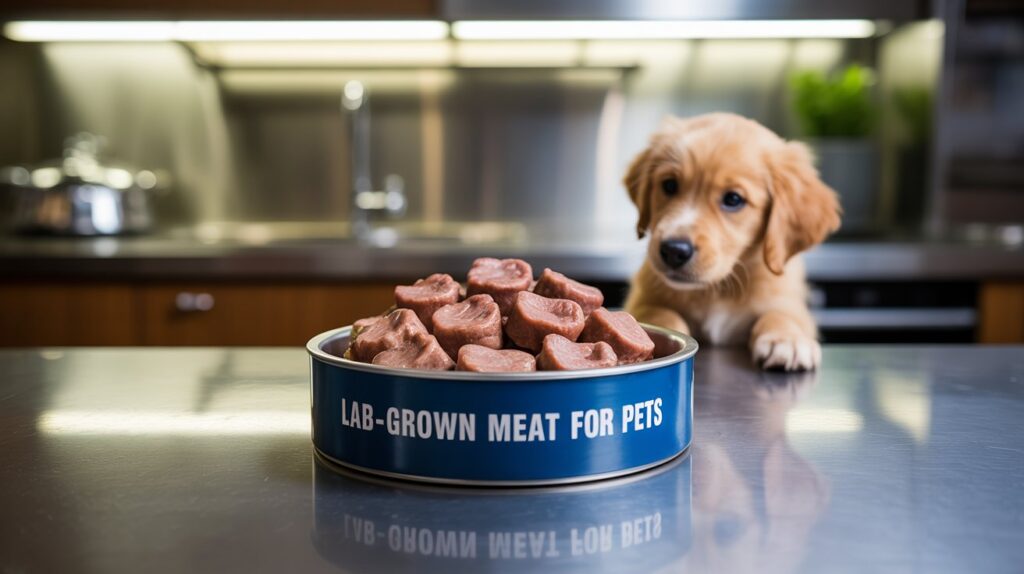Table of Contents
- Introduction
- What Is Lab-Grown Meat?
- The Ethical Benefits of Lab-Grown Pet Food
- Environmental Impact of Cultured Meat for Pets
- Nutritional Value and Safety Concerns
- Challenges and Future Prospects
- Conclusion
- FAQs
Introduction
As pet ownership grows globally, so does the demand for sustainable and ethical pet food. Traditional meat-based pet food raises concerns about animal welfare, environmental degradation, and resource consumption. Could lab-grown meat be the solution? This article explores whether cultured meat can revolutionize ethical pet food, offering a cruelty-free, eco-friendly alternative without compromising nutrition.

What Is Lab-Grown Meat?
Lab-grown meat, also known as cultured meat or cell-based meat, is produced by cultivating animal cells in a controlled environment—eliminating the need for slaughter. Scientists extract stem cells from animals, nourish them in bioreactors, and grow muscle tissue identical to conventional meat.
This technology, initially developed for human consumption, is now being explored for pet food, potentially reducing reliance on factory farming.
The Ethical Benefits of Lab-Grown Pet Food
1. Elimination of Animal Slaughter
Traditional pet food relies on livestock farming, contributing to mass animal slaughter. Lab-grown meat provides a cruelty-free alternative, aligning with the values of ethically conscious pet owners.
2. Reduction in Farm Animal Exploitation
By shifting to cultured meat, the pet food industry could decrease demand for factory-farmed animals, reducing overall animal suffering.
Environmental Impact of Cultured Meat for Pets
1. Lower Carbon Footprint
Livestock farming is a major greenhouse gas emitter. Studies suggest lab-grown meat could reduce emissions by up to 90%, making pet food more sustainable.
2. Reduced Land and Water Use
Conventional meat production requires vast land and water resources. Cultured meat uses significantly fewer resources, easing pressure on ecosystems.
Nutritional Value and Safety Concerns
1. Comparable Protein Quality
Early research indicates that lab-grown meat can match the protein content of traditional meat, ensuring pets receive essential nutrients.
2. Potential Allergen Risks
Since cultured meat is biologically identical to conventional meat, pets with meat allergies may still react. Further studies are needed to assess long-term safety.
Challenges and Future Prospects
1. High Production Costs
Currently, lab-grown meat is expensive to produce. Scaling up manufacturing could lower costs, making it accessible for mainstream pet food.
2. Regulatory Hurdles
Governments must establish clear regulations for cultured pet food to ensure safety and labeling transparency.
3. Consumer Acceptance
Pet owners may hesitate to switch from traditional to lab-grown meat due to unfamiliarity. Education and marketing will play key roles in adoption.
Conclusion
Lab-grown meat holds immense promise as the future of ethical pet food, offering a sustainable, cruelty-free alternative to conventional options. While challenges like cost and regulation remain, advancements in biotechnology could soon make cultured meat a mainstream choice for conscientious pet owners.
FAQs
1. Is lab-grown meat safe for pets?
Yes, early studies suggest it is biologically identical to conventional meat, but long-term research is ongoing.
2. Will lab-grown pet food be more expensive?
Initially, yes, but prices are expected to drop as production scales up.
3. How does lab-grown meat benefit the environment?
It reduces greenhouse gas emissions, land use, and water consumption compared to traditional livestock farming.
4. When will lab-grown pet food be available?
Some companies are already developing prototypes, but widespread availability may take a few more years.
5. Can lab-grown meat meet all my pet’s nutritional needs?
Yes, it is designed to provide the same protein and nutrients as traditional meat.
